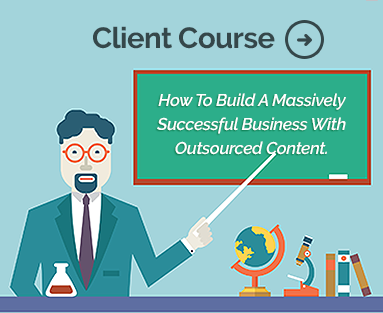A Microsoft Corp study reported the average person’s attention span is eight seconds. That’s less than a goldfish’s at nine-seconds.
They also asked 18 to 24-year-olds to describe the first thing they do when not engaged in an activity. “Pick up my cell phone” ranked first with 77% of positive responses.
This highlights an important target market area: blog posts on social media and websites. Thus, content writing for SEO is a key marketing strategy for products, services, and ideas.
Did you know that you can increase your Google rank by using specific writing techniques? Keep reading to find tips to drive up your SEO ranking.
What Does SEO Mean?
Search Engine Optimization (SEO) describes strategies to increase your website ranking. The end goal is boosting traffic to engage more readers.
Well written SEO content uses target words or phrases. They are called keywords or keyword phrases.
When users want information, they go to an internet search engine and enter words or phrases. The search engine scans websites for matching words or phrases and lists the results. If your website appears on the first page, there’s a good chance the user will visit your site.
Thus, the keywords in your content play a key role in boosting your SEO ranking. Once you get readers to your site, you have to entice them to learn about your ideas, services, or products.
Ways to Increase Your Search Engine Ranking
So, the first question is, “How do I increase my search engine ranking?” There are several methods to help you convey the desired message to readers. Your content must offer new, interesting, and authoritative information.
Including quotes from experts in the field often leads the expert to share your article. This organically expands your reach. In today’s world of “fake news”, linking to reputable sites also increases the reader’s trust.
Content Writing for SEO
Now let’s get down to some of the nuts and bolts. The following gives you tips for writing SEO friendly content.
1. Effective Keywords
The keywords or phrases should represent common search terms input by users. The goal is to choose a keyword with a high number of searches and low competition.
If there’s a lot of competition for the same keyword, your chances of getting picked go down. Thus, the best keywords are those that many people type into search bars, but fewer sites use. This increases the chance that the viewer will land on your site.
2. Keywords Must Naturally to Engage Readers
Keywords should appear in a way that doesn’t interrupt the flow of the text. It’s important for that keyword to stick in the reader’s mind.
The article title and SEO description must include the keyword. Next, it should appear in the first 100 words of the article. This shows the reader that the content will address the topic they’re looking for.
The keyword should also be in an H1 or H2 header and the conclusion. Keywords sprinkled throughout the article tells the reader they chose the right article.
3. Choose a Topic of Interest to the Reader
Always know your audience. Request content directly related to products, services, or ideologies for the consumer. Adult learners won’t spend time on something they don’t perceive as valuable.
Relevant anecdotes and examples keep readers engaged. The content should be written at your audience’s reading level. Tools such as Hemmingway Editor will show the reading level of your content.
Readers feel more confident when the writer uses active instead of passive voice. Your content will have a more authoritative feel.
4. Make Sure Your Article Is Long Enough to “Count”
Knowing that people have short attention spans, you may believe brief content is better. People can write up to 100 words on Twitter. That’s a quick read, but how much valuable content do they get?
It may surprise you that search engines often give a higher ranking to longer articles. The optimal length is at least 500 words, but 1,000 or more is even better.
Search engine research shows that “in-depth” content containing 2,000 words or more is often best. They have lower bounce rates because the articles provide high value for the reader. So don’t be afraid to order longer articles.
5. The Content Must Grab the Audience in the First Paragraph
Were you surprised or even appalled to read that the human attention span is less than a goldfish? If so, mission accomplished. Good content grabs the reader’s attention with shock and awe to keep them reading.
When this statistic was first published it made headlines all over the world. It’s a vivid image and the first part of the data is from a reputable source. The truth is that the goldfish fact was completely made up.
Now, this doesn’t condone falsifying data. Readers want and deserve the truth. You want content containing reputable facts or examples the audience can relate to.
6. Content Must Be Visually Easy-to-Read
Few people enjoy reading long sentences with overly complex words in endless paragraphs. Many people prefer to skim the content and grab the information that interests them.
Most SEO professionals write short, active voice sentences. Paragraphs are limited to a maximum of 3 sentences. Depending on the audience, use contractions and second-person to engage the reader.
Good content has header-separated sections, numbered sections, and/or bullet points. This prevents bombarding the reader with a giant block of text.
Are You Looking for Help with SEO Content?
Have you decided to use content writing for SEO to expand your market? Our experts at iWriter are here to help you in five easy steps.
Begin by setting up a free account on our website. Next, you can describe the type of content your interested in putting on your site. One of our professional writers will develop your content.
After you review the content, you may approve or reject it. Once you’re happy with the article, download it to your site and choose the next topic.
Click here today to send us a message and ask questions.




Comments are closed.